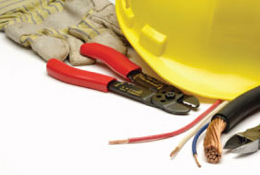Wasted energy translates into carbon dioxide production, air pollution, acid rain, and lots of money down the drain. And though the average American household spends more than $1,100 per year on appliances and heating and cooling costs, you can easily shave 50–75% off this expense by putting some intelligence into your appliance choices. For example, simply replacing a twenty-year-old refrigerator with a new energy-efficient model will save you about $85 per year in electric bills while saving 1,000 kWh of electricity and reducing your home’s carbon dioxide contribution by about a ton per year (which reduces global warming). While highly efficient appliances may be slightly more expensive to buy than comparable models with lower or average efficiencies, the extra up-front cost for a more efficient appliance will be paid back through reduced energy bills long before the product wears out.
Efficient refrigerators and freezers
After air conditioners and water heaters, the refrigerator is likely to be the largest single power user in your home. Refrigerator efficiency has made enormous strides in the past few years, largely due to government prodding from government agencies. Nationwide, an average new fridge with top-mounted freezer sold today uses less than 700 kilowatt hours (kWh) per year, while the average model sold in 1973 used nearly 2,000. The numbers are dropping, too—the most efficient models available today use less than 400 kWh per year.
The average refrigerator has a life span of 15 to 20 years, with operation costs over that period totaling two to three times the initial purchase price; paying a bit more initially for higher efficiency offers a solid payback. And while it may not be worth scrapping your 15-year-old clunker to buy a new energy-efficient model right now, when it does come time, buy the most efficient model available. (Be sure to have the freon removed professionally from your clunker before disposal; most communities have a shop or portable rig that will do so at a reasonable cost.)
Improving your existing fridge’s performance
You can do several simple things to help any fridge do its job more easily and efficiently:
- Cover liquids and wrap foods stored in the fridge. Uncovered foods release moisture (and get dried out), which makes the compressor work harder.
- Clean the door gasket and sealing surface. Replace the gasket if damaged. You can check the gasket seal by closing the refrigerator door on a dollar bill; if you can pull the bill out without resistance, replace the gasket. On new fridges with magnetic seals, put a flashlight inside the fridge some evening, turn off the room lights, and check for light leaking through the seal.
- Unplug the extra fridge or freezer in the garage. The electricity it uses—typically $130 a year or more—costs you far more than the six-pack or two you’ve got stashed there. Take the door off or disable the latch, so kids can’t get stuck inside!
- At least once a year, move your fridge out from the wall and vacuum its condenser coils. Clean coils carry waste heat off faster, and the fridge runs shorter cycles. Leave a couple of inches of space between the coils and the wall for air circulation. (This advice is for fridges with rear coils; some models have the coils under the fridge.)
- Check to see if you have a power-saving switch or a summer-winter switch. Many refrigerators have a small heater (yes, a heater!) inside the walls to prevent condensation build-up on the fridge walls. If yours does, switch it to the power-saving (winter) mode.
- Defrost your fridge if significant frost has built up.
- Turn off your automatic icemaker. It’s more efficient to make ice in ice trays.
- If you can, move the fridge away from the stove, dishwasher, or direct sunlight.
- Set your refrigerator’s temperature between 38 and 42° Fahrenheit, and your freezer between 10 and 150° Fahrenheit. Use a separate thermometer, as the temperature dial on the fridge is likely to be quite inaccurate.
- Keep cold air in: open the fridge door as infrequently and briefly as possible. Know what you are looking for.
Label frozen leftovers.
- Keep the fridge full. An empty fridge cycles frequently without any mass to hold the cold. Beer makes excellent mass, and offers a good excuse to put more of it in the fridge. (In all honesty, plain water in old milk jugs works just as well.)
Buying a new refrigerator
A new, more efficient refrigerator can save you $70 to $80 a year, and will pay for itself in nine years. Newer models also free you from the guilt of harboring a known ozone killer—most are completely CFC-free.
Shop wisely; carefully read the yellow EPA Energy Guide label found on all new appliances. Use it to compare models of similar size.
The American Council for an Energy Efficient Economy is a non-profit organization dedicated to advancing energy efficiency as a means of promoting economic development and environmental protection. Every year ACEEE publishes the Consumer Guide to Home Energy Savings, an invaluable guide listing the most efficient mass-produced appliances by manufacturer, model number, and energy use. We strongly recommend consulting this guide before venturing into any appliance showroom. It has an amazing calming effect on overzealous sales personnel, and allows you to compare energy use by model.
The refrigerator-shopping checklist
- Smaller models use less energy than larger models—don’t buy a fridge that’s larger than you need. One large refrigerator, however, is more efficient than two smaller ones.
- Models with top- or bottom-mounted freezers average 12% less energy use than side-by-side designs.
- Features such as through-the-door ice, chilled water, or automatic ice makers increase the profit margin for the manufacturer, and up the purchase price by about $250. They also greatly increase energy use and are far more likely to need service and repair. Avoid these costly, troublesome options.
- Make sure that any new refrigerator you buy is CFC-free in both the refrigerant and the foam insulation.
- Be willing to pay a bit more for lower operating costs. A fridge that costs $75 more initially, but costs $20 less per year to operate due to better construction and insulation, will pay for itself in less than four years.
For more information on energy efficient living, explore the following websites:










